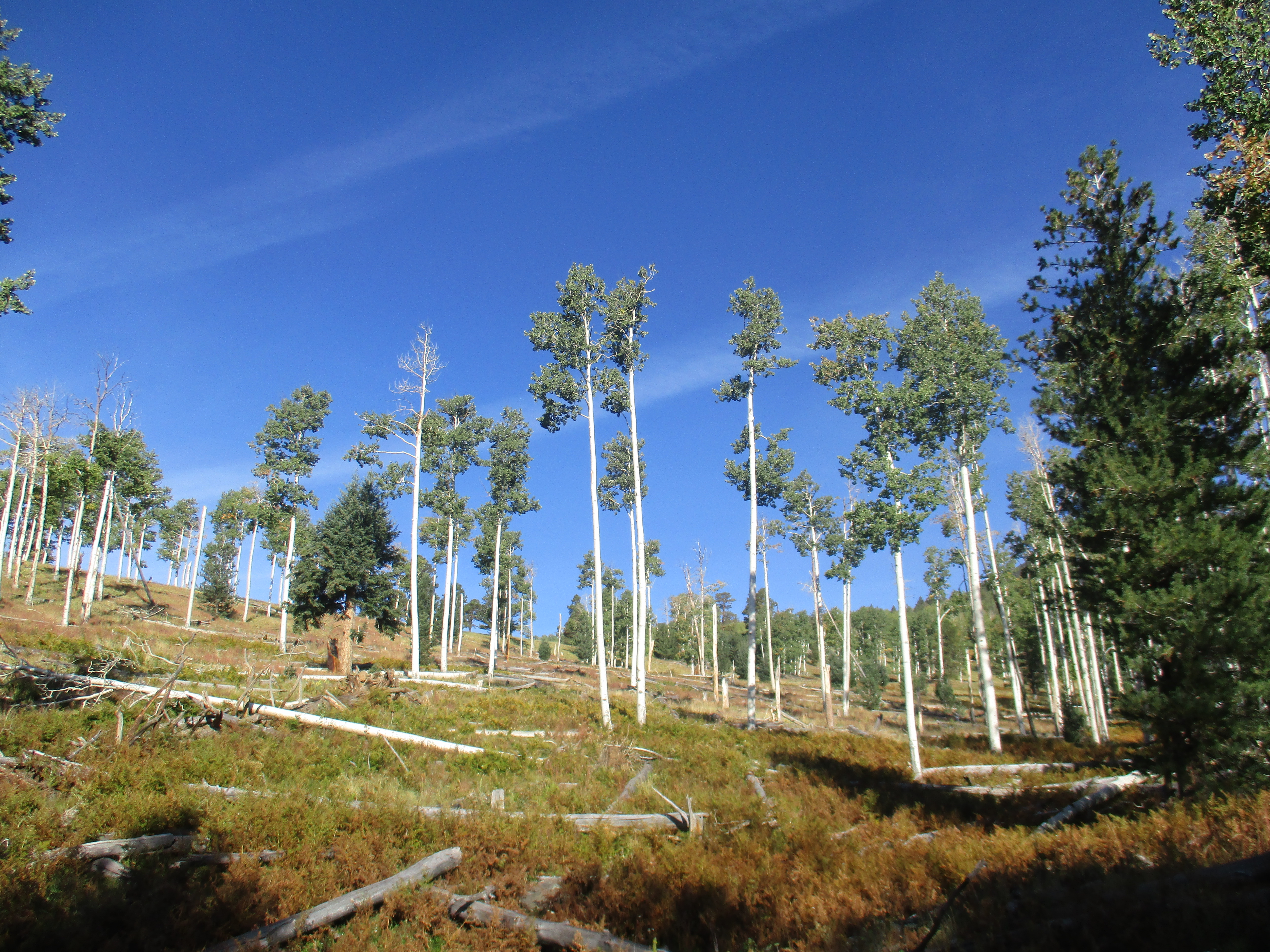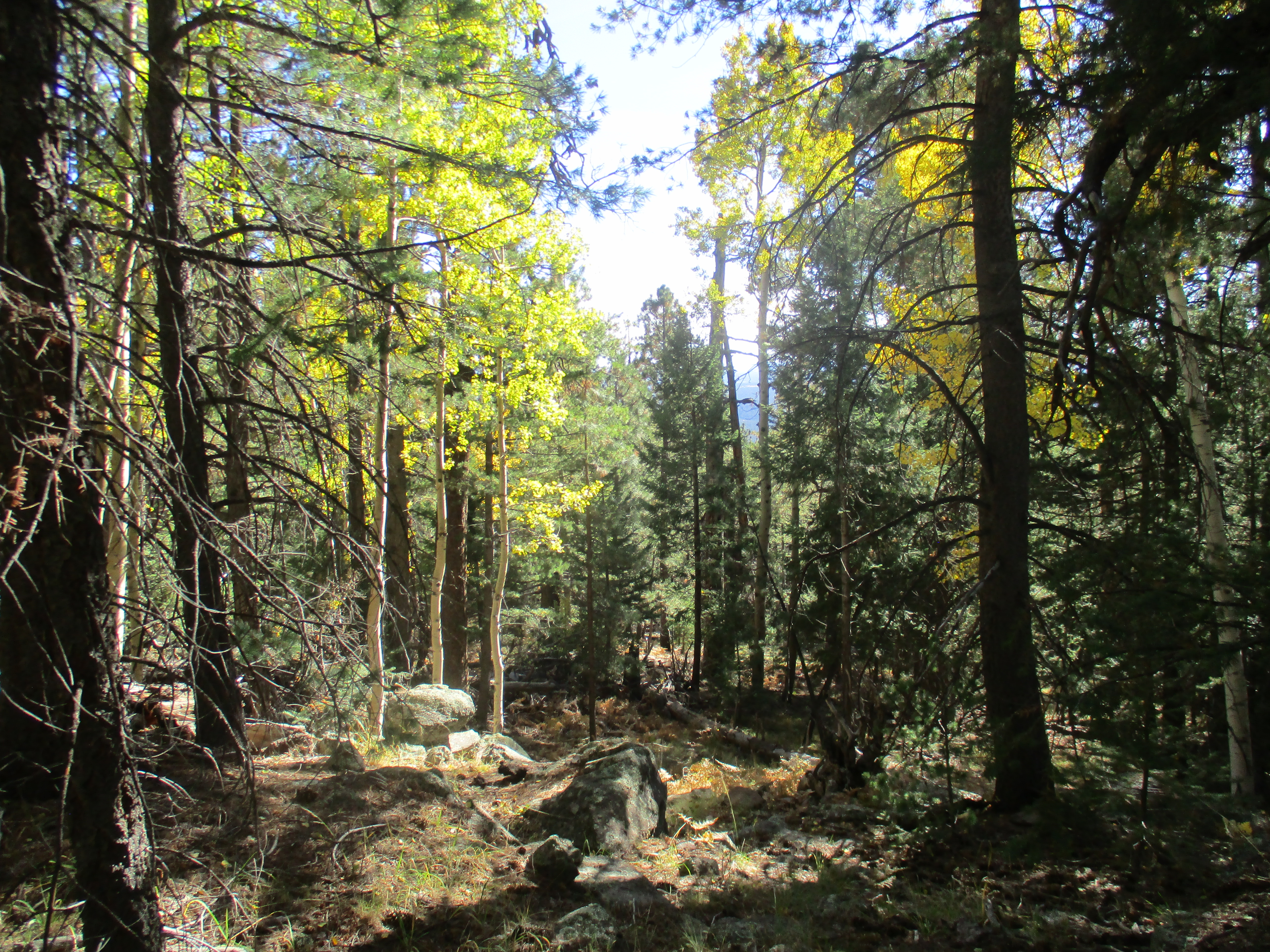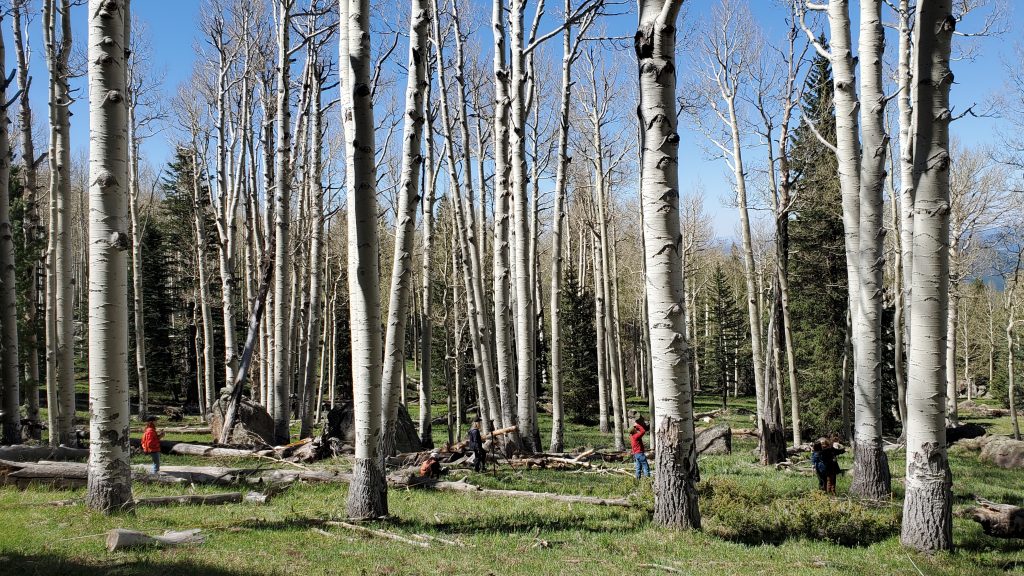Warming temperatures continuously impact mankind, wildlife, major corporations and propositions at all levels of government, but for Flagstaff forests, climate change is a catalyst for countless structural, compositional and external shifts that new generations of trees are struggling to adapt to.
In a study recently published in the journal Forest Ecology and Management, NAU’s Ecological Restoration Institute (ERI) explored how aspen tree populations in northern Arizona are faring against climate change and related disturbances, including drought, wildfire, insect infestations and animal browsing, by tracking tree mortality rates and how often saplings successfully reach adulthood.
In the end, they discovered that younger trees succumbed to environmental challenges far more often than older trees, failing to mature and replenish the population. These results forewarn a disastrous future without the broadleaved beauties, but researchers say they have not given up hope.
Two decades of aspen analysis
Michael Stoddard, the study’s first author and an ERI research associate, said his team focused on aspens for numerous reasons. The species has a greater capacity to adapt to its environment than most plants but has exhibited extreme growth declines during drought events in the last century. Aspen trees are also one of the most broadly distributed tree species in North America and boast indispensable economic and recreational value.
Disturbances like wildfires can positively impact aspen growth, but an aspen’s response to sudden environmental stressors entirely depends on its own resilience.
“One key misconception we sought to address is the belief that the impacts of climate change on aspen trees are solely related to temperature increases,” Stoddard said. “While rising temperatures and prolonged droughts are critical factors, the interplay of these elements with disturbances like fire and browsing is equally significant. Our study highlights that without active management and restoration efforts, aspen stands are at risk of declining further, especially at lower elevations and more southerly exposed areas.”

Stoddard and his team collected data from about 135 permanent plots on the south face of the San Francisco Peaks, establishing the plots from 2000 to 2003 and re-measuring 132 of them in 2021 and 2022.
The study area represented a culmination of disturbances of interest, from a history of adjacent wildfire pressures — including the Schultz, Museum, Pipeline and Tunnel fires — to existing in the heart of the Western megadrought, the region’s most prolonged dry period in at least 1,200 years. Invasive Rocky Mountain elk have also historically damaged nearby forest communities during routine grazing, causing the U.S. Forest Service and the Arizona Game and Fish Department to increase the availability of public elk hunting permits.
After years of navigating the steep landscape, coring ancient trees and sorting through data, the researchers discovered aspen mortality averaged 42% over the study period, with younger trees in drier areas and lower elevations being particularly vulnerable.
While the study confirmed a 13% increase in overall aspen regeneration following the range of disturbances, particularly in moist areas, it was clear that younger aspens consistently struggled to mature into full-sized trees, a sharp decline in population known as a “bottleneck.”
Stoddard said this phenomenon could be driven by a variety of factors, including older trees having more time to grow accustomed to fluctuating climate conditions and competition influences being compounded by gradual temperature growth. If this trend continues, the forests on the Peaks could follow in the footsteps of many woodlands in western North America and succumb to conifer dominance.
Biodiversity and broader ecosystem conventions could suffer in the aftermath, as aspen forests famously provide avenues of water retention and necessary nutrients for a variety of animals.
“Without a balanced age structure, the forest lacks resilience,” Stoddard said. “Mature trees provide stability, but they won’t last forever, and there are not enough younger trees to replace them over time.”
Seeing the forest for the trees
The future of young aspens may look bleak, but ERI researchers and forest managers have not given up yet.

Similar to past resistance to elk browsing, Stoddard said ecologists and forest managers must collaborate to build adaptive strategies for monitoring and supporting aspen regeneration. Some strategies may be challenging to implement in wilderness settings, as ecologists strive to minimize human interference, but Stoddard is confident that consistent work and research could uncover promising next steps in the continued fight against climate change.
He said the aspen population’s regeneration patterns following the 2022 Pipeline fire made him particularly optimistic and highlighted the need for strategies recognizing the prominent roles aspens play in their environments.
“I hope this research not only contributes valuable insights into aspen dynamics but also reinforces the importance of continued partnerships in managing these unique landscapes,” Stoddard said. “By working together, we can implement effective management practices that balance ecological health with the needs of local communities and wildlife.”



